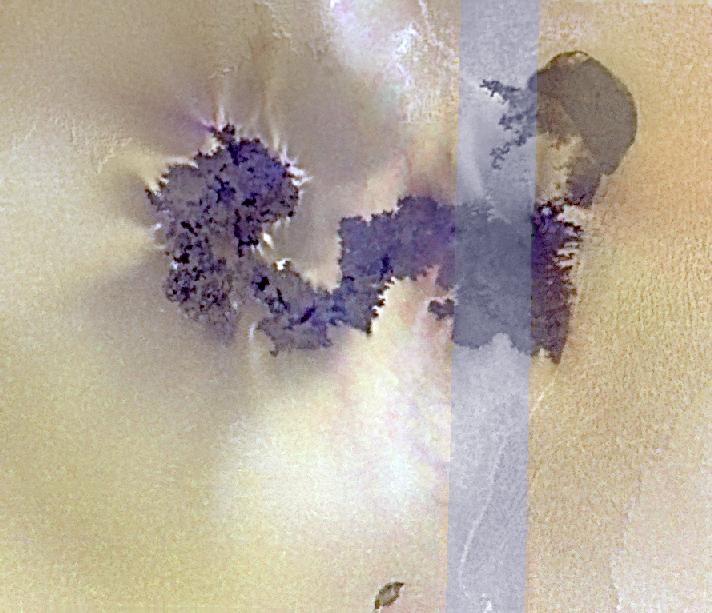

Prometheus is the "Old Faithful" of Io's many active volcanoes. A broad, umbrella-shaped plume of gas and dust has been spotted above Prometheus by both the Voyager and Galileo spacecraft every time the viewing conditions have been favorable. The volcano is surrounded by a prominent circular ring of bright sulfur dioxide that was apparently deposited by the plume. However, the origin of Prometheus' plume is a long-standing mystery: where is the vent that is the source of all the gas and dust?
Some clues are offered by this false-color picture with a resolution of 170 meters (186 yards) per picture element, that was taken by Galileo during the spacecraft's 27th orbit around Jupiter on February 22, 2000. To the right is a dark, semi-circular, lava-filled caldera south of which lies a fissure from which dark lava that has flowed towards the west (left). The lava flows extend 90 kilometers (54 miles) from the source. Bright patches probably composed of sulfur dioxide can be seen in several places along the flow's margins. Two of these patches (near the top left edge of the dark lava, at the farthest reaches of the flow) display faint blue hazes, apparently produced by airborne dust entrained within plumes. Both of these spots are locations of newly erupted lava that has encroached on the surrounding plains since the region was last imaged by Galileo during its 24th orbit in October 1999. Galileo scientists are now studying whether heating of the volatile, sulfur dioxide-rich plains by encroaching hot lava might account for the persistent plume activity observed near Prometheus.
High-Resolution View of Prometheus
Image produced by: Paul Geissler, Planetary Image Research Lab. (PIRL), Lunar and Planetary Lab. (LPL), University of Arizona
The Jet Propulsion Laboratory, Pasadena, CA manages the Galileo mission for NASA's Office of Space Science, Washington, DC. JPL is a division of the California Institute of Technology, Pasadena, CA.
This image and other images and data received from Galileo are posted on the World Wide Web, on the Galileo mission home page at http://galileo.jpl.nasa.gov/. Background information and educational context for the images can be found at http://galileo.jpl.nasa.gov/images/io/ioimages.html.
NASA's Planetary Photojournal PIA-02565
October 26, 2000